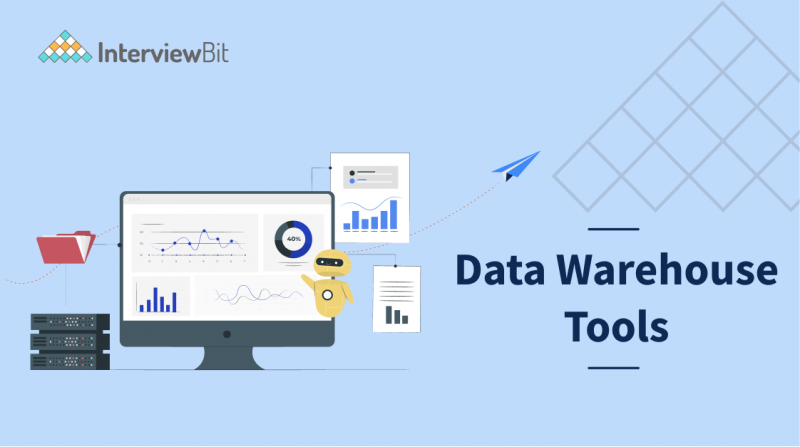To thrive in today’s business environment, an organization needs accurate reporting and data analysis capabilities. Businesses should be able to consolidate and integrate data (from different resources) for different purposes, from customer service to partner integration to executive business decisions. This is where data warehousing comes into play, allowing for easy reporting and analysis. With the increase in data, businesses become increasingly reliant on data warehouses. Data warehouses are no longer merely a buzzword or an innovative idea; they have now become a mainstream method for storing data.
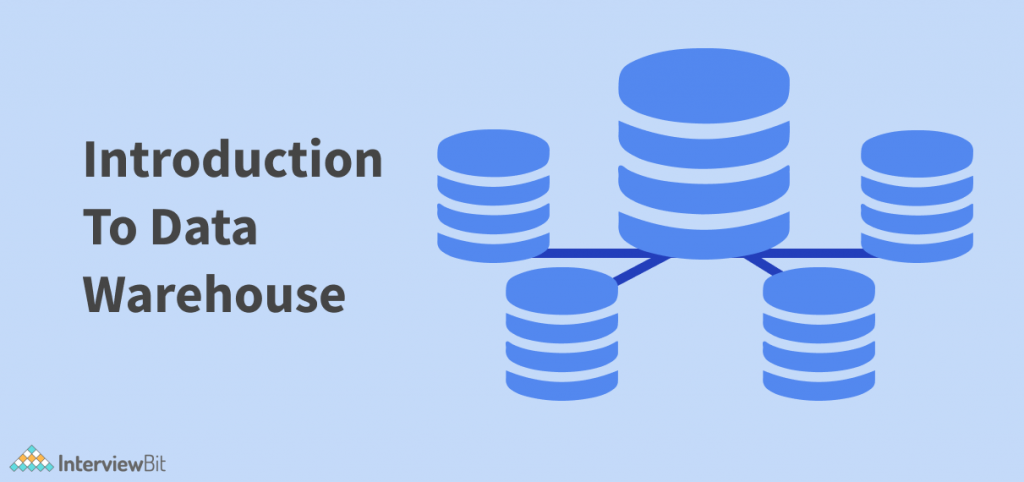
A data warehouse is a platform where data can be integrated precisely to generate meaningful business insights. With data warehousing, businesses can quickly access information, speed up query response times, and gain new insights into big data. Data warehouses have become significantly cheaper for businesses due to the emergence of cloud technology. A number of cloud-based data warehouse tools are available today, which are fast, highly scalable, and cost-effective. Modern data warehousing solutions automate the time-consuming and repetitive tasks associated with designing, developing, and deploying a data warehouse in response to fast-changing business requirements. Data warehousing tools are proving to be a go-to solution for managing ever-growing data volumes at several data-driven enterprises.
- What is a Data Warehouse?
- Types of Data Warehouse
- Top Data Warehouse Tools
- 1. Amazon Redshift
- 2. Microsoft Azure
- 3. Google BigQuery
- 4. Snowflake
- 5. Teradata
- 6. PostgreSQL
- 7. Cloudera
- 8. SAP (Systems Applications and Products)
- 9. Oracle Autonomous Warehouse
- 10. SAS
- Conclusion
- FAQs
- Q.1: Which are the best open-source data warehousing tools available?
- Q.2: What are the different types of data warehousing?
- Q.3: Which data warehouse is best?
- Q.4: What Data Warehouse does Apple use?
- Additional Resources
What is a Data Warehouse?
Data Warehouse is basically a platform to analyze large quantities of data from many sources to make business decisions. The purpose of a data warehouse is usually to compile and analyze business data from heterogeneous sources. By having access to critical data from a number of sources in one location, business users are able to rapidly make informed decisions on key initiatives. This saves them time by eliminating the need to retrieve data from multiple locations. Having your data organized in a single location allows you to perform analysis and reporting at a variety of aggregate levels. Data warehouses are mainly designed to support business intelligence (BI) and analytics activities.
Confused about your next job?
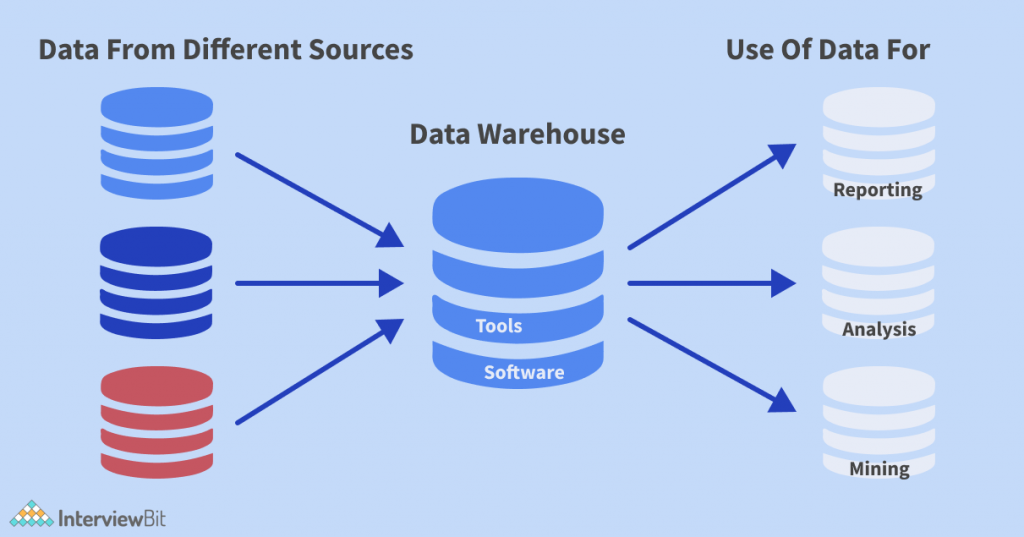
There are various actions that can be done on data using the Data Warehouse tools, including:
- Cleaning data and separating it from junk or duplicate data.
- Extraction, transformation, and loading (ETL) of the data from various formats of sources into a single common format at the destination.
- Querying data from warehouse in order to fetch, update, delete or analyze different combinations of data.
- Creating reports for analysis and business decision-making processes.
Types of Data Warehouse
There are mainly three types of data warehousing, which are as follows:
Enterprise Data Warehouse: These are centralized warehouses that provide decision-making support to different departments of an enterprise. They allow data to be organized and represented in a consistent manner.
Operational Data Store (ODS): It is used when an organization’s reporting requirements cannot be met by OLTP (Online Transactional Processing) system. Since an ODS is updated/refreshed in real-time, it is ideal for routine operations such as storing employee records.
Data Mart: As a part of the data warehouse, a Data Mart is dedicated to a specific type of business line, such as accounting, finance, sales, purchases, or inventory, etc. By providing specific data to a defined group of users more quickly, it provides them with essential information.
Top Data Warehouse Tools
Below are a few Data Warehouse tools that you must know.
1. Amazon Redshift
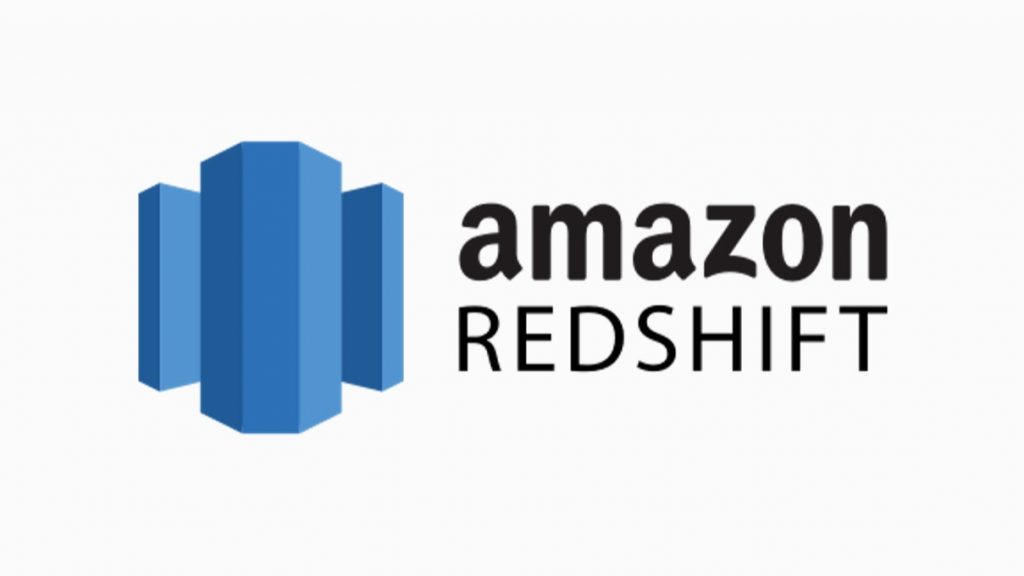
The Amazon Redshift platform is a fully managed cloud-based data warehouse designed to store and analyze large-scale data using SQL queries with Business Intelligence (BI) tools like Tableau, Microsoft Power BI, etc. It is a simple, cost-effective tool and is considered a very critical part of Amazon Web Services, one of the most popular cloud computing platforms. Data analysis can be done with the system in a matter of seconds, which makes it ideal for high-speed data analysis.
Features:
- It automates many of the common administrative tasks necessary to monitor, manage, and scale your data warehouse.
- Smart features including high-performance computing, parallelization, uniform query optimization, and columnar storage enable it to perform complex analytical queries.
- Using Redshift, you can scale data more flexibly and elastically. With just a few clicks in the management console, Redshift can automatically scale data to match capacity and performance requirements.
- Amazon Redshift data warehouses consist of nodes (computing resources), which are organized into clusters. The Redshift cluster is continuously monitored, data from failed drives is automatically re-replicated and nodes are replaced when necessary.
2. Microsoft Azure
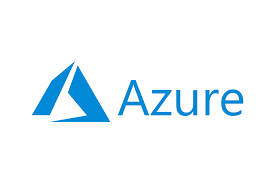
In 2010, Microsoft launched Azure, a cloud computing platform. In Microsoft Azure, there is an analytical data warehouse called SQL Data Warehouse (SQL DW), which is scalable for petabytes and built according to SQL Server. Basically, it consists of over 200 different products and cloud services, such as Data Analytics, Virtual Compute, Storage, Virtual Networks, Internet Traffic Manager, Websites, Media Services, Mobile Services, Integration, etc. Through all of these services, highly scalable and efficient applications can be built, run, and managed across multiple cloud networks using AI (Artificial Intelligence) and Machine Learning.
Features:
- It provides easy portability of data and a genuinely compatible platform between on-premises and public clouds.
- In order to improve performance and user experience, Azure offers a variety of cross-connection options, including VPNs (Virtual Private Networks), caching, and content delivery networks (CDNs).
- Azure App is a fully managed web hosting service that enables you to build web applications, RESTful APIs, and services.
- Unlike most other cloud services, Azure has many data centers and delivery points that enable it to deliver content more quickly and provide an optimal user experience.
3. Google BigQuery
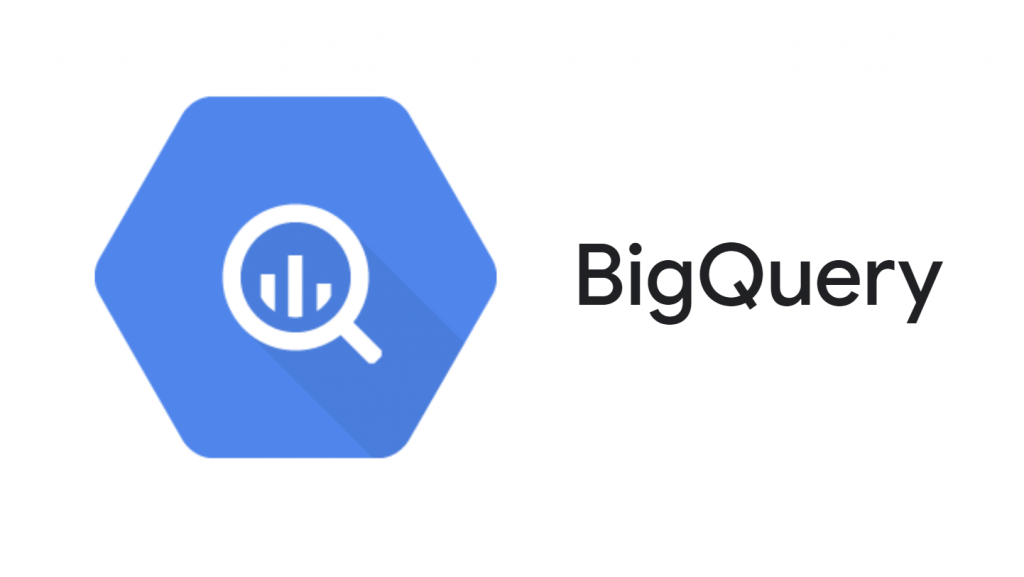
BigQuery is a cost-effective data warehousing tool with built-in machine learning capabilities that allows scalable analysis over petabytes of data. This is a Platform as a Service that makes it easy to query big datasets using super-fast SQL queries. Google Inc. announced BigQuery in 2010 and made it available to users in 2011. It supports automatic data transfer and full access to the stored database. Data scientists who run machine learning or data mining operations may find it the perfect solution since they deal with large datasets.
Features:
- Geospatial analytics are supported by this cloud-native data warehouse. It can be used to analyze location-based data or find new lines of business.
- Cloud Dataflow, Spark, and Hadoop (data tools to handle large-scale processing) make it easy to read and write data into BigQuery.
- Data in billions of rows can be analyzed to get data insights using BigQuery’s SQL-lite syntax.
- The separation of storage and computation specifically offers an array of benefits to users of BigQuery. This decoupling allows BigQuery to provide an almost limitless and scalable storage solution.
- BigQuery spends most of its time processing metadata and initiating queries; however, the actual execution time is very short.
4. Snowflake

Snowflake is a cloud-based Data Warehouse Tool that provides a faster, easier-to-use, and more flexible framework than other data warehouses. Since Snowflake runs completely in the cloud, it offers a complete SaaS (Software as a Service) architecture. Snowflake simplifies data processing by letting users work (data blending, analysis, and transformations) with varied forms of data structures (structured and semi-structured) using a single language, SQL.
Features:
- In the snowflake, combined structured (well-defined data model for effective analysis like a relational database) and semistructured data (data which does not conform to a data model but has some structure) can be loaded into the cloud database without being transformed into the same/fixed category.
- Snowflake’s in-built software handles maintenance, and data is encrypted by default during transmission.
- Snowflake’s multi-tenant architecture enables real-time data sharing across your organization. You don’t need to move data.
- Snowflake provides scalable, dynamic computing power with charges based almost exclusively on usage.
- Snowflake has implemented features like auto-scaling (automatically start/stop clusters during unpredictable resource-intensive processing) and auto-suspend (stops the virtual warehouse when clusters have been sitting idle for a defined period) to ensure minimal administration. Both of these concepts can increase flexibility, optimize performance, and lower management costs.
5. Teradata

Teradata DWH (Data warehouse) is a simple, cost-effective relational database management system offered by the Teradata organization. For viewing and managing large amounts of data, it is considered one of the best data warehousing tools. It is based on the concept of parallel processing and provides users with a simple yet efficient tool to analyze data. It also optimizes database performance through smart in-memory processing at no additional cost. With its ability to consume, analyze, and manage data, it meets all of the integration and ETL (Extract, Transform, and Load) requirements.
Features:
- A key feature of Teradata is its high scalability, as it uses MPP (Massively Parallel Processing) to perform computations. Therefore, Teradata is able to store and process data from multiple servers simultaneously, which means it can handle multiple types of big data.
- Unlike other data warehouses, this one separates data into hot and cold categories. In this case, cold data refers to data that is rarely used, and hot data refers to data that is mostly used.
- With a simple navigation system and a sensible GUI (Graphical User Interface), business users can easily use it with just some basic training.
- Teradata has many powerful utilities for handling data in (import) and out (export) of its systems like FastLoad, MultiLoad, FastExport, and TPT.
6. PostgreSQL

PostgreSQL is a renowned open-source database management solution known for its reliability, robustness, and performance. It is used as a primary data storage or data warehouse for many applications, including mobile, web, geospatial, and analytics applications. PostgreSQL allows the data warehouse to analyze, transform, model, and deliver the data in a database server, making it both flexible and intelligent. In short, it helps developers to create applications, and managers to create fault-tolerant environments for their data and protect data integrity. It also helps with managing your data, regardless of how large or small the dataset may be.
Features:
- It supports SQL and JSON querying, as well as Multi-Version Concurrency Control (MVCC) feature is also supported for optimizing database performance.
- As it provides excellent support for geographical objects, it can be used for geographic information systems and location-based services.
- PostgreSQL makes use of the fundamental principle of databases, such as primary keys, foreign keys, and database schemas and views, in order to further enhance its simplicity.
- Furthermore, PostgreSQL is not only free and open-source but also highly extensible, which means you can write your own data types, custom functions, and even code in multiple programming languages without having to recompile the database.
7. Cloudera

The Cloudera Data Warehousing Platform is the 1st enterprise data cloud on the market, offering multi-functional analytics based on a platform that eliminates data silos and speeds up the creation of data insights. The platform is ideal for analyzing big data as well as extracting real-time business intelligence.
Features:
- It helps you secure, govern, and manage all your data and metadata, whether it’s on private clouds, public clouds, or hybrid clouds.
- Since Cloudera Data Platform handles data from the edge, structured or unstructured, it is cost-effective.
- Additionally, Cloudera offers a modern enterprise platform, tools, and skills that help us unlock business insights using artificial intelligence and machine learning.
- The suite of tools includes Data Visualization, Hue, and Workload XM, which makes it easy to explore, visualize, and query datasets as well as optimize workload health.
8. SAP (Systems Applications and Products)
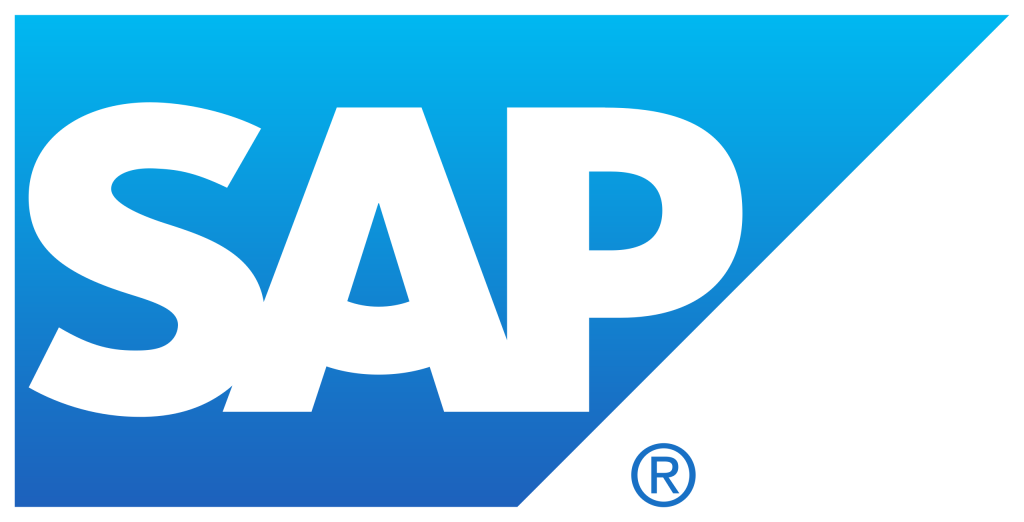
The SAP Data Warehouse is a data management platform aimed at mapping all business processes in an organization. For reporting and analytics purposes, data from various SAP applications is extracted, consolidated, and made available in a unified format in the data warehouse. Both enterprise IT and line of business users can utilize SAP’s data management features to gain valuable insights from data. It is an integrated data management platform suite for open client/server systems. As a leading provider of the best business information management solutions, it is one of the best data warehouse tools. It offers open and scalable solutions with data security and governance capabilities.
Features:
- SAP provides a simplified data warehouse architecture, integration with any system, and on-site and cloud deployment options.
- The system is flexible and supports scheduled logistic processing inside the data warehouse.
- It leverages the power of SAP HANA (High-Speed Analytical Appliance) which integrates SAP and non-SAP data to provide real-time insights and offers an enterprise-ready data warehouse with end-to-end functionality.
- It provides transparent and highly flexible business solutions, and it follows a modular concept for easy setup and efficient space utilization.
9. Oracle Autonomous Warehouse
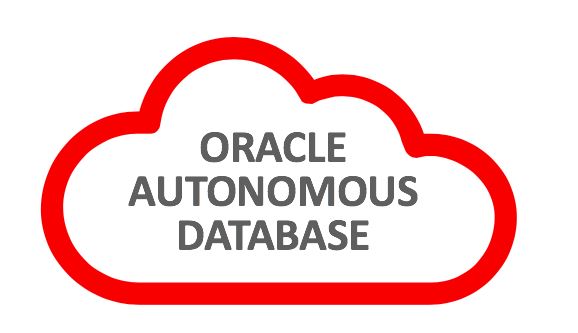
Oracle Autonomous Data Warehouse is a cloud-based data warehouse service that eliminates all the complexity of building a data warehouse, and data security and helps develop data-driven applications. This tool automates the configuration, securing, regulating, scaling, and backing up of data within the data warehouse. A number of self-service tools are inbuilt to improve the productivity of analysts, data scientists, and developers. This new cloud computing service is simple, fast, and scalable. Keeping data safe from outsiders and insiders is easy with this tool.
Features:
- This includes tools for data loading, building business models, data transformation, and obtaining insights from databases automatically. It also includes built-in converged databases that simplify queries across multiple data types and machine learning analysis.
- It provides built-in support for multimodel data and multiple workloads using a converged database.
- Oracle works seamlessly with Windows and Linux platforms, and it has virtualization capabilities.
- It encrypts data in transit and at rest, protects regulated data, applies security patches, and detects threats autonomously.
- Hi-speed connections also are available, allowing huge amounts of data to be transferred quickly.
10. SAS
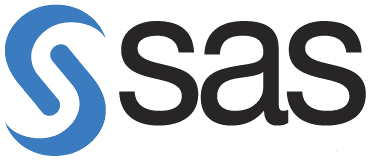
Statistical Analysis System (SAS) is one of the large data warehouse tools that are used to access information from various data sources. The benefit of SAS data management is that users can access the data from wherever it is stored (from cloud, to legacy systems, to data lakes, like Hadoop, etc.) without any hassle. Complex analyses can be performed, and information can be distributed across organizations using SAS data management.
Features:
- A quality Knowledge Base (QKB) is built-in to store and process data.
- As SAS activities are managed from centralized locations, users are able to access the tool remotely from anywhere, as long as they have access to the internet.
- You can view raw data files in external databases, manage data using various tools, and display data in statistical graphics and reports.
Conclusion
Data warehouses are a type of data management system that improves access to information, speeds up query response times, and gives businesses deeper insight from big data. It is the central repository of any organization in any sector, so it is vital to choose the right tool. In this article, we discussed the most popular and best Data Warehousing Tools currently available. As for storing and analyzing data, each of these top 10 tools has its own advantages and disadvantages. It is always advisable to be prepared with an understanding of both the current and future requirements of organizations before making a choice. Based on the requirements, accuracy, and efficiency of each tool, users can choose the best alternative tool.
FAQs
Q.1: Which are the best open-source data warehousing tools available?
Ans. PostgreSQL and Cloudera are some of the best open-source data warehouse tools available today.
Q.2: What are the different types of data warehousing?
Ans. Data warehouses can be classified into three different types:
- Enterprise data warehouse (EDW)
- Operational data store (ODS)
- Data Mart
Q.3: Which data warehouse is best?
Ans: Data warehouses such as Amazon Redshift, Microsoft Azure, and Google BigQuery are among the best. However, before making a decision, it is always advisable to be aware of both the current and future requirements of organizations. Based on the requirements, accuracy, and efficiency of each tool, you can choose the best alternative tool.
Q.4: What Data Warehouse does Apple use?
Ans: Apple uses Teradata equipment to store all that data. With the launch of iCloud in 2011, they now operate a multi-petabyte Teradata system.


